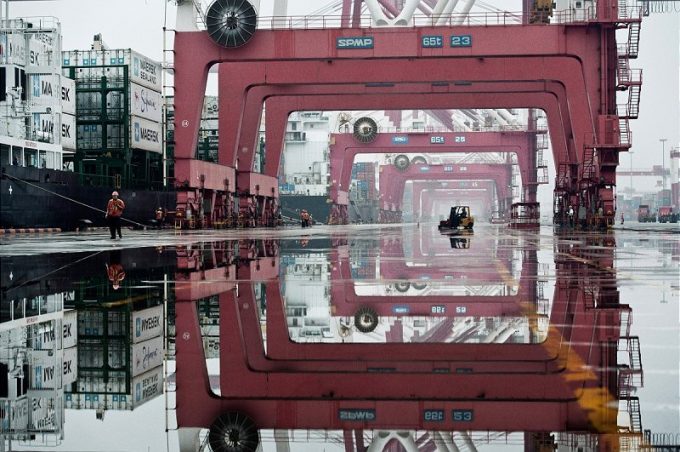Ports of LA and Long Beach busier this year and eyeing an early peak season
Container imports through the US west coast San Pedro Bay ports of Los Angeles and ...

A new level of US tariffs on Chinese exports could lead to an 8% drop in eastbound transpacific container volumes this year, according to new research from Alphaliner.
It notes that, apart from South Korea’s Hyundai Merchant Marine and Japan’s ONE, every line operating on the transpacific remains heavily reliant on Chinese goods filling their transpacific services.
And the tariff hikes follow a dismal first quarter this year, in which volumes from China to the US fell by 8.3% year on year.
On 10 May, the US announced it was raising the 10% tariff on around 5,700 products to 25%. This was swiftly followed, on 13 May, by China retaliating and announcing it would issue duties on some $60bn of US imports by 5%-25% on 1 June.
One relief to shippers in this spat is that the office of the United States Trade Representative (USTR) has said that goods loaded onto US-bound vessels before 10 May would not be subject to the higher tariffs, as long as they are unloaded at a US port before 1 June.
“While most of the containerised cargo already shipped to the US west coast should be able to meet the 1 June date, some goods shipped to the US east coast will miss that deadline,” Alphaliner reported.
However, it added that China’s response had increased the probability that the US would apply higher tariffs to the $300bn of Chinese exports that were not included on the first tranche of higher duties, which could prove disastrous for carriers and other stakeholders in transpacific container supply chains.
“Alphaliner estimates that a further escalation of the US-China trade war could result a reduction in overall transpacific eastbound volumes by at least 8%,” it said in a research note today.
“Exports from other Far East origins meanwhile, will not grow sufficiently to offset the expected reduction in cargo from China.”
Currently, China accounts for 68% of all transpacific traffic and at least 65% of loadings for every carrier, except HMM and ONE, where it accounts for 52% and 55% respectively, given that both still carry substantial amounts of cargo for their domestic shippers. And of the remaining 12 transpacific carriers, some are dangerously exposed: some 98% of Matson’s volumes are of Chinese origin, while Wan Hai and PIL rely on Chinese exports for 90% of their volumes.
Alphaliner added: “Containerised cargo volumes in the transpacific trade could see severe reductions in the aftermaths of the tariff hikes.
“The shock comes just ahead of the traditional summer peak season and it could reverse the freight rate increases that carriers have secured for the May 2019 to April 2020 contract season, as spot rates could come under pressure from expected the lower volumes.”
Comment on this article